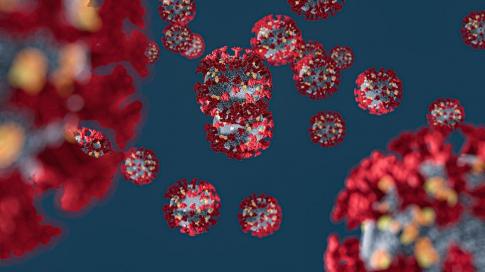Truth and Viral Consequences

Proper surveillance of potentially catastrophic public-health threats requires...
By Chris Patten
Proper surveillance of potentially catastrophic public-health threats requires knowledge and transparency, both within and between countries. As the deadly COVID-19 pandemic once again shows, telling the truth saves lives.
LONDON – Of all the challenges that humans have faced over millennia, disease has always been a particularly brutal and resourceful enemy.
The impact of disease has shaped history. Amerindians were ravaged by illnesses that the Spanish conquistadors brought to Mexico and South America; the “stout Cortez” of John Keats’s poem was accompanied by killer diseases like smallpox, measles, influenza, and typhus. Unlike Eurasians, native populations in the New World had not spent several thousand years evolving with animals and their diseases. As a result, America’s indigenous populations declined by some 90% in the sixteenth and seventeenth centuries.
In Europe, on the other hand, fighting disease was a formative element in the growth of political authority and state governance in the late Middle Ages and early Renaissance period. Lethal plagues like the Black Death led authorities in the Northern Italian city-states and elsewhere to fight back with enforced public hygiene and quarantines. Henry VIII’s England and other European states established isolation hospitals. Later, the United States developed public-health services in part to fight yellow fever and other epidemics.
Military campaigns also were accompanied by disease. Napoleon’s leading general, Marshal Ney, wrote that “General Famine and General Winter” cut down the French army that marched on – and subsequently retreated from – Moscow in 1812. But “General Typhus and General TB” played their parts as well.
Disease can be cunning and implacable. Despite humanity’s efforts, influenza pandemics have swept the world on average three times a century for the last 500 years. The deadliest of these was the erroneously named “Spanish Flu” of 1918, the first case of which was actually recorded in Kansas. That pandemic may have killed over 50 million people worldwide, more than the number who died in World War I.
In fact, children at the time chanted a chilling song as they skipped rope:
“I had a little bird,
Its name was Enza.
I opened the window
And in-flew-Enza.”
So, with the new COVID-19 coronavirus now assaulting the world, what can we learn from past experience?
Above all, we know that global problems require global solutions. That means coordinating health research and making resources available for poorer countries to develop their health systems – an approach that has already proven effective in tackling malaria. Furthermore, the World Health Organization should play the central role in protecting us from epidemic disease, in particular by focusing, together with national governments, on disease surveillance and issuing warnings.
Indeed, careful scientific research is essential to “germ governance” – as it was, for example, in combating cholera in mid-nineteenth-century London. Back then, a doctor called John Snow wandered around the city cataloguing cases of the disease. By using geography and statistics, Snow helped to spark a shift from simply focusing on the health of the individual body and the treatment of symptoms to recognizing the relevance of the wider health and behavior of whole populations.
Crucially, Snow applied the old Chinese adage about learning truth from the facts. Likewise, fighting the COVID-19 pandemic requires not only changing patterns of social behavior through measures such as self-isolation and temporary travel restrictions, but also telling the public the truth. People need to know in good time what is happening and what they should do.
That is why we should be deeply grateful for the heroic dedication and commitment of so many Chinese doctors and health workers in fighting this new killer virus. Their brave struggle has been fought for us all.
China’s communist leaders, on the other hand, should now face some serious questions.
When a variety of pneumonia called SARS – severe acute respiratory syndrome – broke out in Southern China in November 2002, the central authorities in Beijing covered it up for months. Not coincidentally, perhaps, a new Chinese leader, Hu Jintao, was due to be installed in spring 2003. The Communist Party of China’s clampdown on reporting about the outbreak, and its delay in informing the WHO, may well have reflected its determination to avoid taking the shine off Hu’s elevation.
On that occasion, the brave Chinese whistleblower Jiang Yanyong helped to end the cover-up. Concerted international action subsequently prevented the SARS epidemic from turning into a pandemic. Had this not happened, there would have been many more cases and fatalities around the world.
But when the new coronavirus emerged late last year, China’s communist leaders unfortunately seemed to have learned nothing from that previous episode. Another brave doctor, Li Wenliang, and some of his colleagues tried to warn about the new virus in Wuhan last December. (Some reports, for example in the South China Morning Post, suggest that there was growing disquiet about its detection even earlier.) But Li and his co-workers were silenced by the police and threatened with punishment unless they kept quiet.
Life in Wuhan thus continued as normal while the epidemic spread. Millions left the city and the surrounding province for the Chinese New Year celebrations – festivities that ended with many funerals, including that of Li. Research by Southampton University, not yet peer-reviewed, suggests that earlier action by the Chinese authorities would have dramatically reduced the rate of infections.
Disease is a killer. So, too, is the secrecy of a totalitarian regime such as the one headed by Chinese President Xi Jinping, which censored and closed down social media when they reported what was actually happening in Wuhan.
Proper surveillance of potentially catastrophic public-health threats requires knowledge and transparency, both within and between countries. As the deadly COVID-19 pandemic once again shows, telling the truth saves lives.
/project-syndicate




 del.icio.us
del.icio.us Digg
Digg

Post your comment